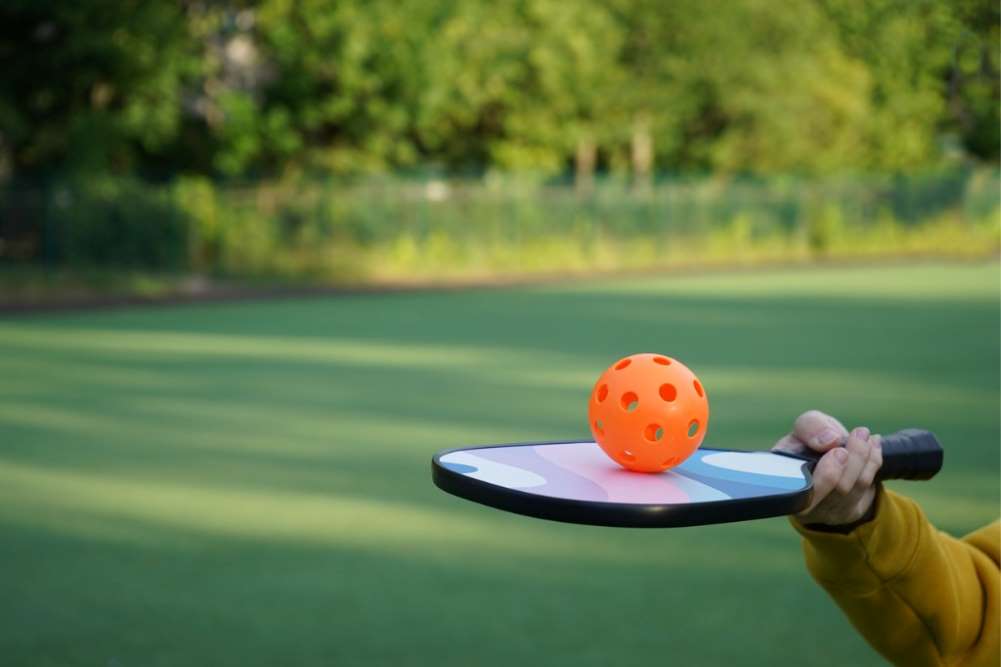
Pickleball, a fun and fast-paced sport that blends elements of tennis, badminton, and table tennis, has seen a surge in popularity in recent years. While it's an excellent way to stay active, like any sport, pickleball can also lead to injuries if proper precautions are not taken. Whether you’re a beginner or an experienced player, following these tips can help you enjoy the game while minimizing the risk of injury.
1. Warm-Up Properly Before Every Game
One of the most common mistakes players make is skipping the warm-up. Before stepping onto the court, it's essential to spend at least 5 to 10 minutes warming up your muscles. Start with light cardio exercises like jogging or jumping jacks to get your blood flowing. Follow this with dynamic stretches such as arm circles, leg swings, and lunges. These movements help loosen your muscles, increase your range of motion, and prepare your body for the physical demands of pickleball.
2. Wear Appropriate Footwear
Choosing the right footwear is crucial for injury prevention in pickleball. Unlike running shoes, which are designed for forward motion, court shoes provide the lateral support needed for the side-to-side movements common in pickleball. Look for shoes with non-marking soles, good grip, cushioning for shock absorption, and adequate ankle support. Wearing improper shoes can lead to sprained ankles, as well as slips and falls, which are a leading cause of injury according to statistics on pickleball injuries. Investing in a good pair of athletic shoes to keep your feet and joints protected can help avoid these types of injuries.
3. Focus on Technique and Form
Proper technique and form are key to preventing pickleball injuries. Poor technique can place undue stress on muscles and joints, leading to injuries over time. For instance, bending your knees and keeping your weight centered can help you maintain balance and avoid falls. Likewise, when hitting the ball, make sure to use your whole body, not just your wrist or shoulder, to reduce strain on specific areas. If you're new to the sport, consider taking lessons from a qualified coach to learn the correct form and techniques from the start.
4. Strengthen Key Muscles
Strength training is a vital component of injury prevention. Focusing on key muscle groups, such as your legs, core, shoulders, and back, will help you build the strength necessary to handle the quick movements required in pickleball. Exercises like squats, lunges, planks, and shoulder presses can improve your strength and stability. Additionally, working on your balance with exercises like single-leg stands or using a balance board can help you maintain better control on the court, reducing the likelihood of falls or missteps.
5. Stay Hydrated and Take Breaks
Dehydration can lead to muscle cramps, dizziness, and fatigue, increasing the risk of injury. Make sure to drink plenty of water before, during, and after playing pickleball. It's also essential to listen to your body and take breaks when needed. Don’t push yourself beyond your limits, especially on hot days or when you're feeling tired. Resting when necessary allows your body to recover and reduces the risk of overuse injuries.
6. Pay Attention to Your Body
Your body often provides warning signs before a significant injury occurs. Listen to it! If you feel pain, discomfort, or unusual tightness in any part of your body while playing, stop immediately and rest. Ignoring these signals can lead to more serious injuries, such as muscle tears or ligament damage. After a game, take a few minutes to cool down with light stretching and breathing exercises to help your muscles recover.
7. Practice Proper Footwork
Footwork is a crucial aspect of pickleball that helps prevent injuries, particularly to the ankles and knees. Focus on short, quick steps rather than long strides, and stay on the balls of your feet to maintain agility and balance. Avoid crossing your feet while moving laterally, as this can cause you to trip and fall. Practicing drills that emphasize good footwork can help you move more efficiently on the court and reduce the risk of injury.
8. Use Proper Equipment
Using the right equipment is just as important as wearing the right footwear. Make sure your paddle is the correct size and weight for your skill level and physical condition. A paddle that's too heavy can strain your wrist and shoulder, while one that's too light may not provide adequate control. Also, ensure that the court surface is in good condition, free of debris, and properly maintained to reduce the risk of tripping or slipping.
9. Know Your Limits
It can be tempting to play for hours, especially if you’re having fun or in a competitive match. However, it's crucial to know your physical limits. Overexertion can lead to fatigue, which in turn increases the likelihood of injury. Overuse injuries can also occur when repretitively overworking certain muscles. Gradually increase the duration and intensity of your play as your fitness improves, and don’t hesitate to take a break or stop if you feel tired or sore.
10. Stay Engaged and Aware
Pickleball is a fast-moving game that requires constant attention to the ball, your opponents, and your positioning. Always keep your head up and be aware of your surroundings. Collisions with other players or the net can cause injuries. Good communication with your playing partner, especially in doubles, can help avoid unnecessary accidents and ensure a safer game.
While pickleball is a relatively low-impact sport, injuries can still occur if proper precautions are not taken. By incorporating these injury prevention tips into your routine, you can significantly reduce your risk and enjoy many safe and fun games. Remember, taking care of your body and playing smart will help you stay on the court and keep enjoying this fantastic game for years to come.



























